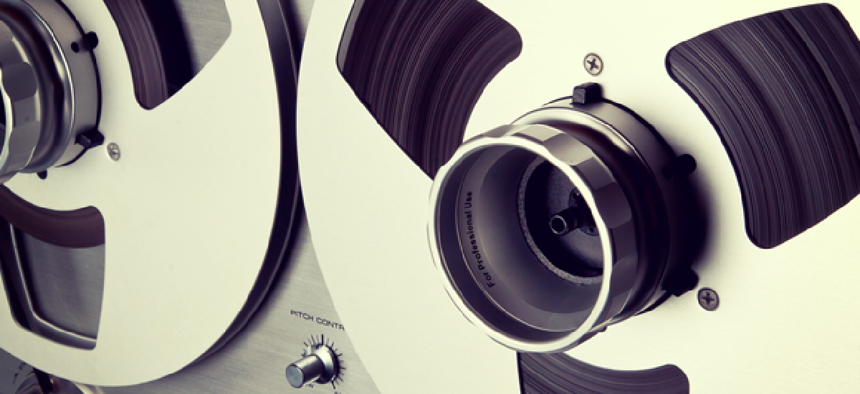Legacy IT: Still the reel deal

The reel-to-reel data recorders that were once standard equipment on U.S. Cold War-era nuclear test ranges are still being used by researchers working on weapon component trials.
The reel-to-reel data recorders that were once standard equipment on U.S. Cold War-era nuclear test ranges are still being used by researchers working on weapon component trials.
Sandia National Lab, responsible for developing, engineering and testing the non-nuclear components of nuclear weapons, from time-to-time still uses the magnetic tape drives originally put in place more than three decades ago to record test data. Additionally, the systems are also used as a teaching tool for weapons scientists.
Examples of the vintage systems, the first of which were designed in the 1950s to record telemetry generated by Sandia’s test ranges in the Western U.S., are now housed in an instructional facility where the legacy hardware is on exhibit for study by todays’ nuclear weapons experts.
“Tremendous amounts of knowledge are represented by this hardware, and being able to pick up and examine these legacy items can often greatly enhance learning over just studying archive drawings and reports,” said John Whitley, a manager in Weapon Engineering Professional Development.
Along with the reel-to-reel database systems, the exhibit also includes the first neutron generator designed by Sandia, a cylinder roughly a foot tall and about eight inches in diameter, which the lab said is a giant by today’s neutron generator standards. It also includes a 1951 technical and specification manual for the first Sandia-designed nuclear weapon component and the first Sandia design of a fuzing radar system.
The AMPEX recorders like those in the exhibit are still in use today, Sandia’s staff said in a statement.
“We still use those machines today to recover legacy flight test data from nuclear weapons Joint Test Assemblies and to recover data from legacy underground nuclear tests,” said Gary Ashcraft of Sandia’s Enhanced Systems and Data Analysis department.
The reel-to-reel analog recorders were standard issue on telemetry ranges starting in the 1960s, although the machines in Sandia’s display date from about 1984, according to the lab.
“The machines didn’t change too much over the years in their basic operation,” said Ashcraft. “Fifty years of the same technology said a lot about how well they were designed, and many companies made them.”
One 1-inch-wide 14-track tape holds about 70 gigabytes of analog waveform data, which Ashcraft called “pretty impressive for the time.”
This article originally appeared on FCW, a sister site to GCN.
NEXT STORY: DigitalGlobe launches maps API





